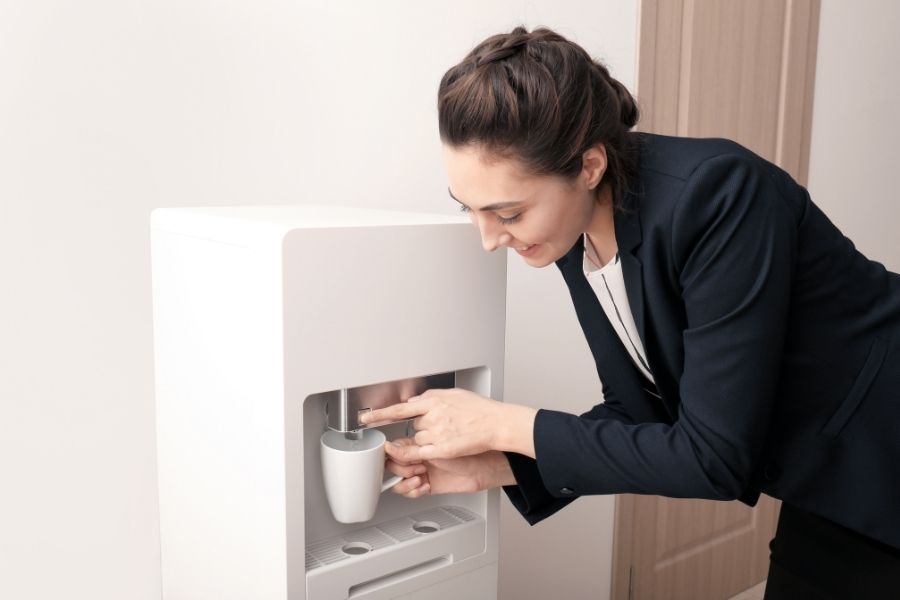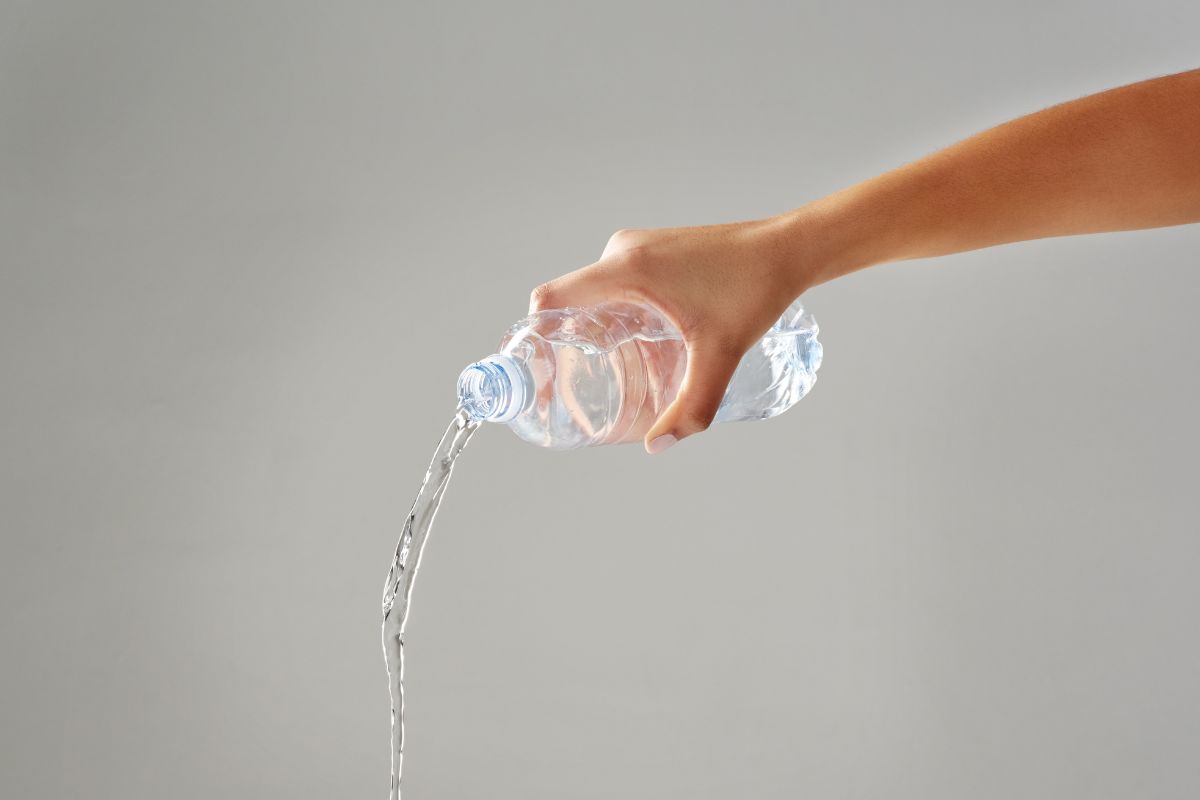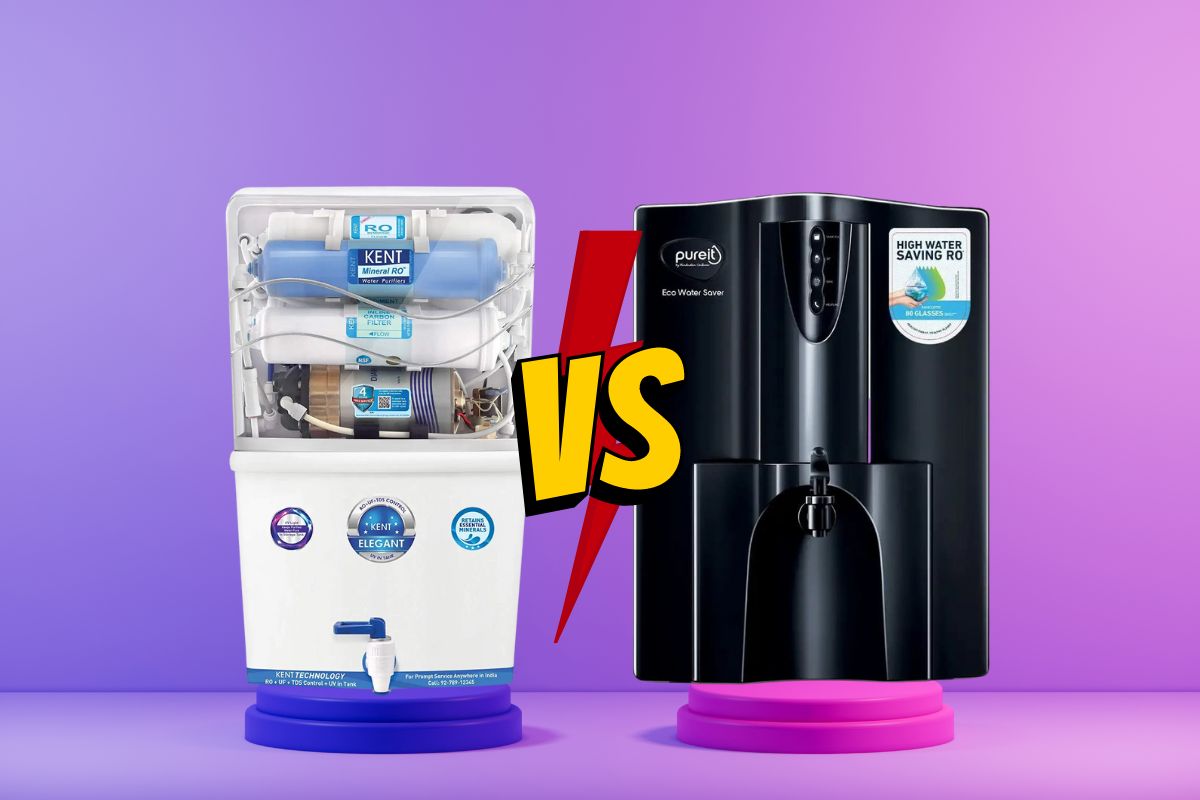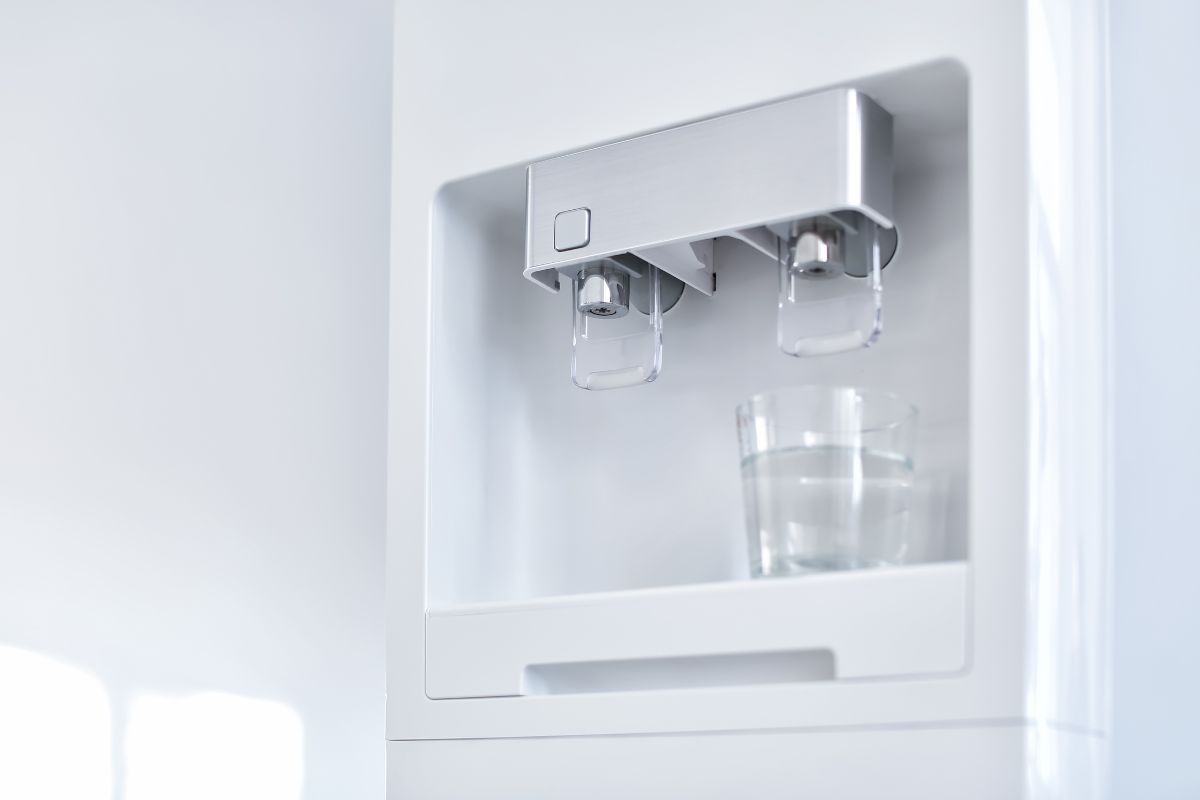
When it comes to water purification systems, different people have different opinions and all of them claim to the right choice. However, one of the most frequently spoken about in this category is that of the UV water filters. They have been positioned as the end all be all of the water purification segment with claims like “removes 99.99% of all bacteria”, etc. While those claims may be true in most cases, they do omit some clear facts that ought to be taken into consideration when choosing the right water purifier for you.
Yes, disinfecting your water is a great choice, but is it enough? Are there other types of filtrations that you also might need instead of or in addition to UV filtration? What are the parameters of the water that you use for drinking? There are a variety of factors that all contribute in making the choice for the right water filter. In this blog, we will examine the key disadvantages of this UV water filtration technology so that you can make the right decision for yourself.
List of the UV water purification disadvantages
01. UV Only Targets Microorganisms, Not Chemical Contaminants
One major disadvantage of UV water purification is that it only targets and neutralizes living microorganisms such as bacteria, viruses, molds and fungi. UV light does not remove chemical contaminants or toxins that may be present in water.
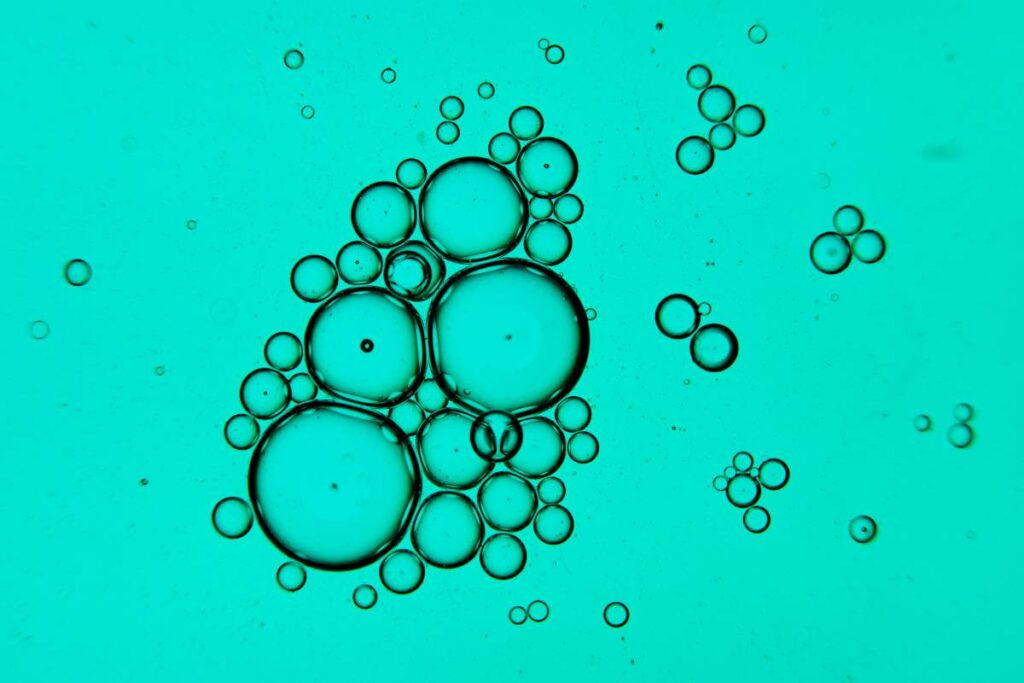
Examples of chemical contaminants that can remain after UV treatment include:
- Heavy metals like lead, mercury and arsenic
- Volatile organic compounds (VOCs) including chloroform, benzene, methylene chloride
- Pesticides and herbicides such as DDT, Atrazine, Simazine
- Industrial chemicals and solvents like perchloroethylene, xylenes, trichloroethylene
- Inorganic compounds such as nitrites, nitrates, sulfates, phosphates
Many of these chemical toxins and impurities can have negative health consequences if ingested, even in small amounts over long periods. For example, heavy metal accumulation can damage the kidneys, liver and central nervous system. Prolonged VOC exposure may increase cancer risks. High nitrate levels can cause methemoglobinemia or “blue baby syndrome” in infants.
To remove these types of toxins and impurities, additional water filtration methods are needed, such as reverse osmosis or granular activated carbon filtering. UV disinfection does not fully purify water of all potential contaminants on its own. It must be paired with the right filtration technologies to create a complete water treatment solution.
02. UV Doesn’t Improve the Taste of Water
Similarly, many people believe that the installation of a UV purification system will improve the taste and odour of drinking water. Nevertheless, UV treatment does not alter the taste and the compounds that cause undesirable smells and tastes.

The substances that affect taste such as chlorine, minerals, organic matter and microplastics must usually be separated by filtration or treatment methods. Examples include:
• Filters with activated carbon – absorb chlorine and organic compounds
• Water softeners that remove hardness-causing minerals like calcium and magnesium
• Pre-treatment of sediment – this removes rust, silt, and sand.
• Total dissolved solids, microplastics and sodium sulfates are filtered out using the method of reverse osmosis.
If an attempt is made to improve the taste of water by means of UV disinfection, additional water filtration units will have to be employed with an aim at eliminating the odour and colour of the water as well as other impurities that could still be present in it. There are two types of taste and odor improvements that UV does not offer – physical and chemical filtration.
03. UV Doesn’t Physically Remove Microorganisms
While extremely effective at neutralizing pathogens, UV purification does not physically filter out or remove microbial cells from the water stream. Instead, it works by damaging the DNA and preventing microorganisms like bacteria and viruses from replicating. This prevents them from causing illness, but does not extract them.
UV disinfection works at the genetic level by exposing microbes to UV-C radiation between 200-280 nm wavelengths. This high-energy light permanently alters nucleic acids like DNA and RNA by causing thymine dimers and other molecular distortions that disrupt cell replication.
But while inactivated, the microbial cells remain physically present in the water flow even after UV exposure. This differs from methods like reverse osmosis that force water through a semipermeable membrane to physically block and extract contaminants.
So UV inactivates microbes through genetic damage, but does not fundamentally extract or reduce the total amount of microorganisms present. Additional mechanical filtration is required for that physical removal process.
05. UV Water Purification Requires Electricity
UV water treatment systems need electricity to power the special UV-C bulbs that disinfect the water. This creates an ongoing electrical cost for as long as the UV purifier remains in use. The power draw is relatively low, around 50 watts for standard residential units, but worth factoring in.
Also, UV purifiers must be wired to an electrical source and hard-mounted in place. They can’t simply be connected inline like some filter cartridges. Proper installation by a qualified technician is important for safety and performance. This also means choosing an appropriate indoor location with an available power outlet.
06. UV Water Purification is Reliant on a Constant Power Supply
Related to the need for electricity, UV disinfection is reliant on a constant supply of power. If electricity is interrupted, the UV purifier will immediately shut off, stopping the disinfection process. Flow will continue through the unit, but without UV exposure.
Most residential UV systems lack integrated backup power sources like batteries or generators in the event of emergencies or power outages. Having an uninterrupted power supply or generator helps minimize any lapses in disinfection protection. Otherwise, users may want to boil water during extended outages.
07. UV Units Heat Water and Don’t Store Water Before Use
Point-of-use UV purification systems treat water on demand as it flows through. They do not store treated water in a tank for later use like some undercounter or whole house filters. The flow is rapid, taking just milliseconds for exposure, so storage isn’t needed.
And when not in use, the enclosed UV bulbs will cause passive heating of water sitting in the chamber – a small design limitation. So users should avoid running UV units when water isn’t actively flowing to prevent overheating and waste.
08. Determining When to Replace UV Bulbs is Challenging
Over time, the intensity and UV output of bulbs will naturally degrade, requiring replacement. But it’s difficult for users to assess when bulbs are losing effectiveness. There is rarely any visual indication.
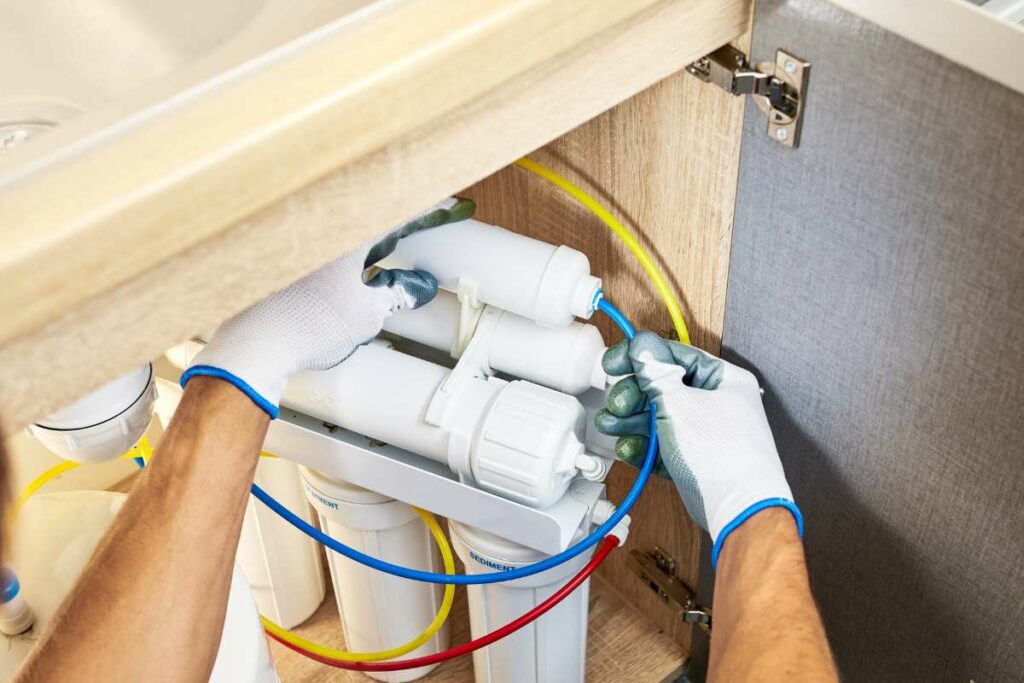
Following the manufacturer’s recommendations for preventative bulb replacement is advised to ensure adequate disinfection. Bulbs typically need replacement after 6-18 months of continuous use depending on water quality, flow rate and usage.
More definitive bulb analysis requires testing UV output directly with a radiometer or meter. But not all residential systems include built-in UV monitors. Otherwise users much rely on total runtime.
Annual bulb replacement is recommended for cautious maintenance. Marking calendars with future reminder dates can help avoid lapses.
Mitigating UV Water Purification Disadvantages
While UV treatment alone is not a complete water purification solution, its disadvantages can be mitigated through proper system design:
- Adding pre-filtration like 5-micron sediment filters to remove cysts and particles. This prevents shielding of microbes from UV exposure.
- Combining UV with granular activated carbon filtration to remove chemicals along with disinfection. Carbon adsorbs impurities UV doesn’t treat.
- Incorporating post-filtration like 0.5 micron microfilters to catch any deactivated microorganisms.
- Following a strict bulb replacement schedule based on usage, water quality, and manufacturer guidance.
- For community systems, using UV with chloramine residual disinfection for added protection against recontamination.
- Selecting new UV-LED technology to improve lifespan up to 9000 hours and energy efficiency.
- Using a backup power supply or generator for uninterrupted operation during outages.
- Adding an automatic water shut-off that engages if power fails for safety.
When to Choose UV Water Treatment
Ideally suited for:
- Disinfecting biologically contaminated groundwater or surface water
- Adding a secondary barrier after carbon filtration or softening
- Providing supplemental disinfection alongside other treatments like chlorine
- Disinfecting stored rainwater or graywater for reuse
- Small scale point-of-use residential or commercial use
Less suited for:
- Complete stand-alone whole house purification
- Treating heavily polluted or chemically contaminated water
- Very high volume community or municipal scale treatment
Is UV water better than RO water?
Ultraviolet (UV) and reverse osmosis (RO) are two popular methods for water purification in homes. Both effectively remove contaminants, but work in different ways.
UV Water Purification
UV water purification uses ultraviolet light to disinfect water. UV light destroys the DNA and RNA of microorganisms like bacteria, viruses, and protozoa, rendering them unable to reproduce or infect.
Microorganism Inactivation by UV Water Treatment
| Microorganism | Log Reduction |
| Bacteria | >6 log reduction |
| Viruses | 4 log reduction |
| Protozoa | 3-4 log reduction |
As shown, UV light is very effective against bacteria and viruses. However, it has lower efficacy against more resistant protozoan parasites like Giardia and Cryptosporidium. Additional filtration is often combined with UV to remove any parasites that may slip through.
Advantages of UV water purification include:
- Chemical-free disinfection
- Fast and simple
- Effective bacterial and viral inactivation
Reverse Osmosis Water Purification
Reverse osmosis (RO) uses pressure to push water through a semipermeable membrane that filters out contaminants. RO removes metals like lead and arsenic, particulates, microorganisms, organic chemicals, and up to 99% of dissolved salts and minerals.
Contaminant Removal Efficiency of RO Systems
| Contaminant | Removal Efficiency |
| Arsenic | up to 98% |
| Lead | up to 98% |
| Chlorine | 97-99% |
| Pesticides | 97-99% |
| Bacteria | 97-99% |
RO provides excellent removal across a wide range of common water contaminants.
Disadvantages include:
- Can remove healthy minerals
- High water waste in the filtering process
- More expensive equipment and filters
UV Water vs RO Water
RO removes more types of contaminants and dissolved solids. However, UV inactivates bacteria and viruses that can sometimes get through RO membranes.
For whole home purification, combining RO and UV provides the most thorough treatment by both filtering particles and disinfecting microorganisms. UV adds chemical-free protection against any contamination that slips past the RO filter from improper maintenance or wear.
RO alone is usually sufficient for drinking water, while some prefer combining RO and UV for production of ultrapure water. UV systems are cheaper and simpler to maintain for point-of-use disinfection of well water or small batches of water.
So while UV and RO take different approaches to water treatment, both effectively reduce many major drinking water health risks. Combing the two purification methods provides the most comprehensive contaminant removal and microbiological disinfection.
Conclusion
UV water purification delivers effective disinfection against microbiological contaminants when properly applied, but it is not a stand-alone solution. Understanding its capabilities and disadvantages allows for better system design by pairing with filtration. Often, the ideal solution is integrating UV treatment alongside other technologies like reverse osmosis, activated carbon adsorption or sediment filtration. With adequate supporting processes, UV light can serve as a crucial barrier for pathogens without significant drawbacks.



